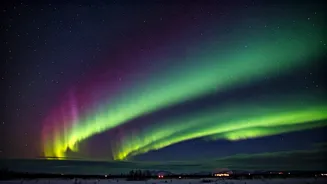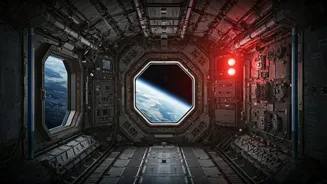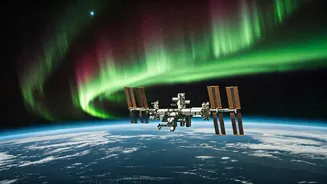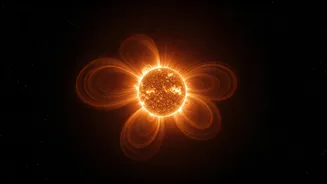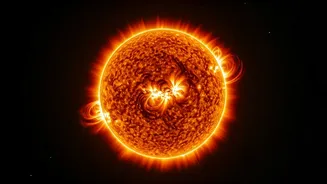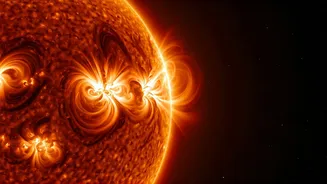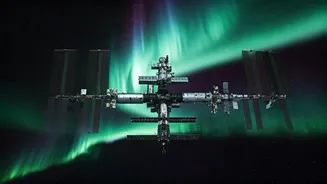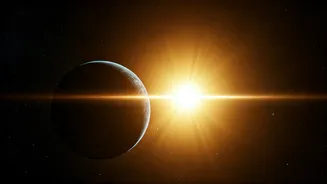Ancient Lights, Myths
Throughout history, before scientific explanations, cultures sought to understand the aurora through mythology and folklore. Indigenous peoples, particularly
in the Arctic regions, held deeply spiritual beliefs about the lights. For instance, the Inuit saw the aurora as the spirits of the dead dancing across the sky, a pathway to the afterlife or a connection to ancestors. Scandinavian myths often depicted the aurora as reflections of the Valkyries' armor or a pathway for the gods. These stories provided comfort and a framework for understanding the unknown, weaving the aurora into the fabric of daily life and cultural identity. The aurora became more than just a visual display; it was a symbol, a story, and a connection to the spiritual realm, shaping their worldviews.
Early Scientific Inquiries
As civilizations progressed, the curiosity shifted from mythology to scientific exploration, with thinkers initiating the first inquiries into the aurora. The Greeks and Romans observed and documented the aurora, although their understanding was limited by the technology available. Aristotle, in his work 'Meteorologica,' speculated about the aurora, suggesting it was related to atmospheric phenomena. These early observations laid the groundwork for future investigation. The Chinese also recorded the aurora, linking its appearance with celestial and earthly events, such as changes in the emperor's reign or significant weather patterns. While lacking the tools to fully explain it, their meticulous observations proved crucial for historical records. This period highlighted the nascent stages of scientific thought, moving from speculation to observation, setting the stage for more elaborate research.
The Rise of Theories
The path to understanding the aurora underwent significant advancement with the advent of scientific methodologies. During the 17th and 18th centuries, several theories emerged attempting to explain the phenomenon. Scientists like Edmond Halley, known for his comet predictions, proposed the aurora was related to the Earth's magnetic field and its interaction with cosmic rays. Other researchers theorized electrical and atmospheric causes, even as technologies advanced. These theories, though not completely accurate, demonstrated the growing appreciation of physics. The development of scientific instruments, like telescopes and early electrical measurement devices, improved observations and fueled better theories. Such early theories, though incomplete, were crucial as they initiated the focus on the scientific understanding of the aurora.
The Dawn of Modern Science
The 19th century witnessed a breakthrough in understanding the aurora, with the rise of electromagnetism significantly advancing the field. Scientists started connecting the aurora with solar activity and the Earth's magnetic field. Key discoveries in electromagnetism, such as the relationship between electricity and magnetism, gave them valuable tools for explaining aurora effects. This period saw a clearer understanding of the origin of the aurora. The discovery of sunspots and their relationship to solar flares and geomagnetic storms provided crucial clues. These findings helped explain how charged particles from the sun, when interacting with the Earth's magnetic field and atmosphere, created auroral displays. The scientific breakthroughs marked a pivotal moment, shifting the focus to a more precise and accurate understanding of the aurora's causes.
Space Age Revelations
The Space Age brought a revolution in the scientific study of the aurora, with spacecraft and advanced instruments providing unprecedented data. Satellites orbiting the Earth provided direct observations of solar wind, the Earth's magnetosphere, and the auroral regions. Instruments measured the energy and composition of particles, allowing scientists to confirm the link between solar activity and the aurora. Furthermore, advancements in spectroscopy helped scientists to identify the specific gases in the atmosphere responsible for auroral emissions. The use of advanced computational models helped to simulate and forecast auroral activity. The Space Age completely transformed our perspective of the aurora, offering a comprehensive understanding of the complex interaction between the sun, the Earth's magnetic field, and the atmosphere, solidifying our understanding of the phenomenon.
Aurora Today and Future
Our understanding of the aurora continues to evolve. Scientists are currently using advanced tools to study the aurora in more detail. This involves using high-resolution cameras, sophisticated satellites, and ground-based observatories. They are also examining the impact of space weather on technology, such as communications and power grids, in addition to studying the aurora's role in climate and atmospheric processes. The integration of data from various sources is helping scientists create detailed models of auroral dynamics. The aurora's appeal lies in its mystery, inviting ongoing exploration. Continuous study gives a more profound understanding of space weather and its wider effects, shaping how we prepare for and manage technological disruptions. The aurora remains a significant focus of scientific research, opening the doors to exciting possibilities in atmospheric, space, and planetary studies.
